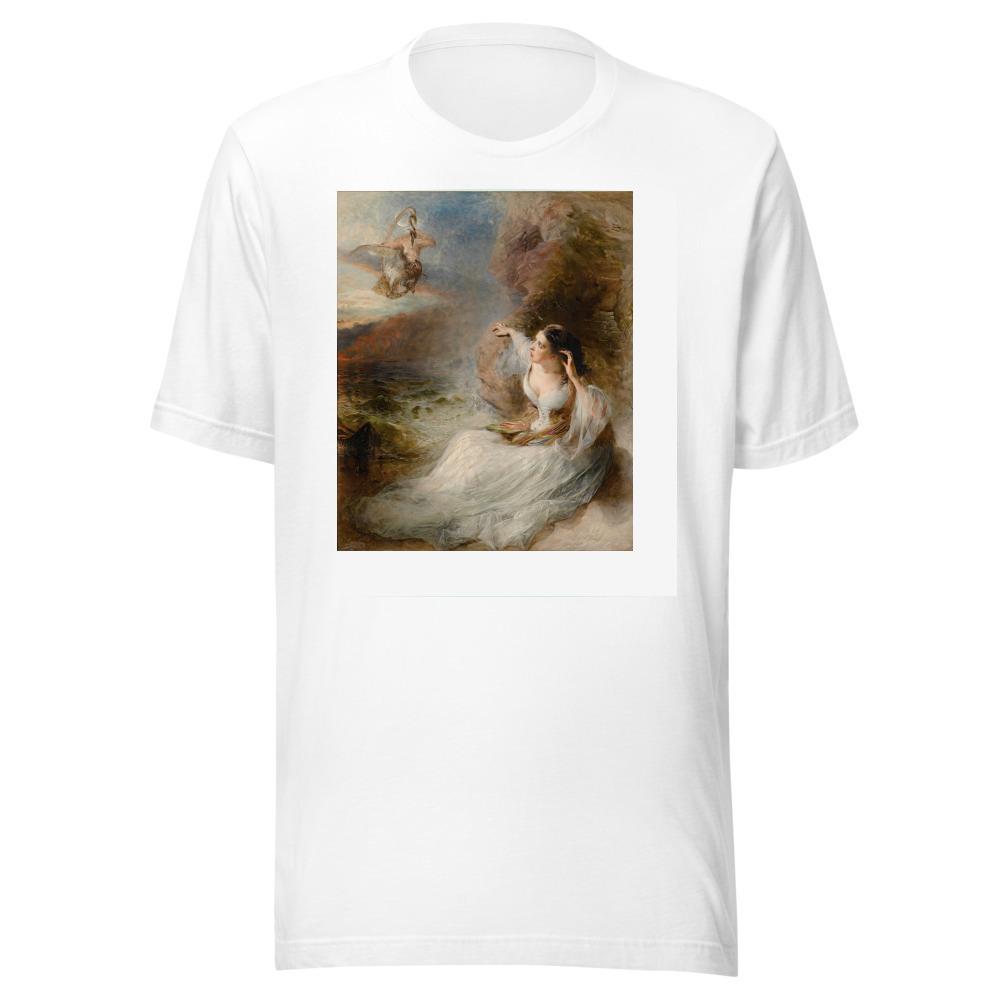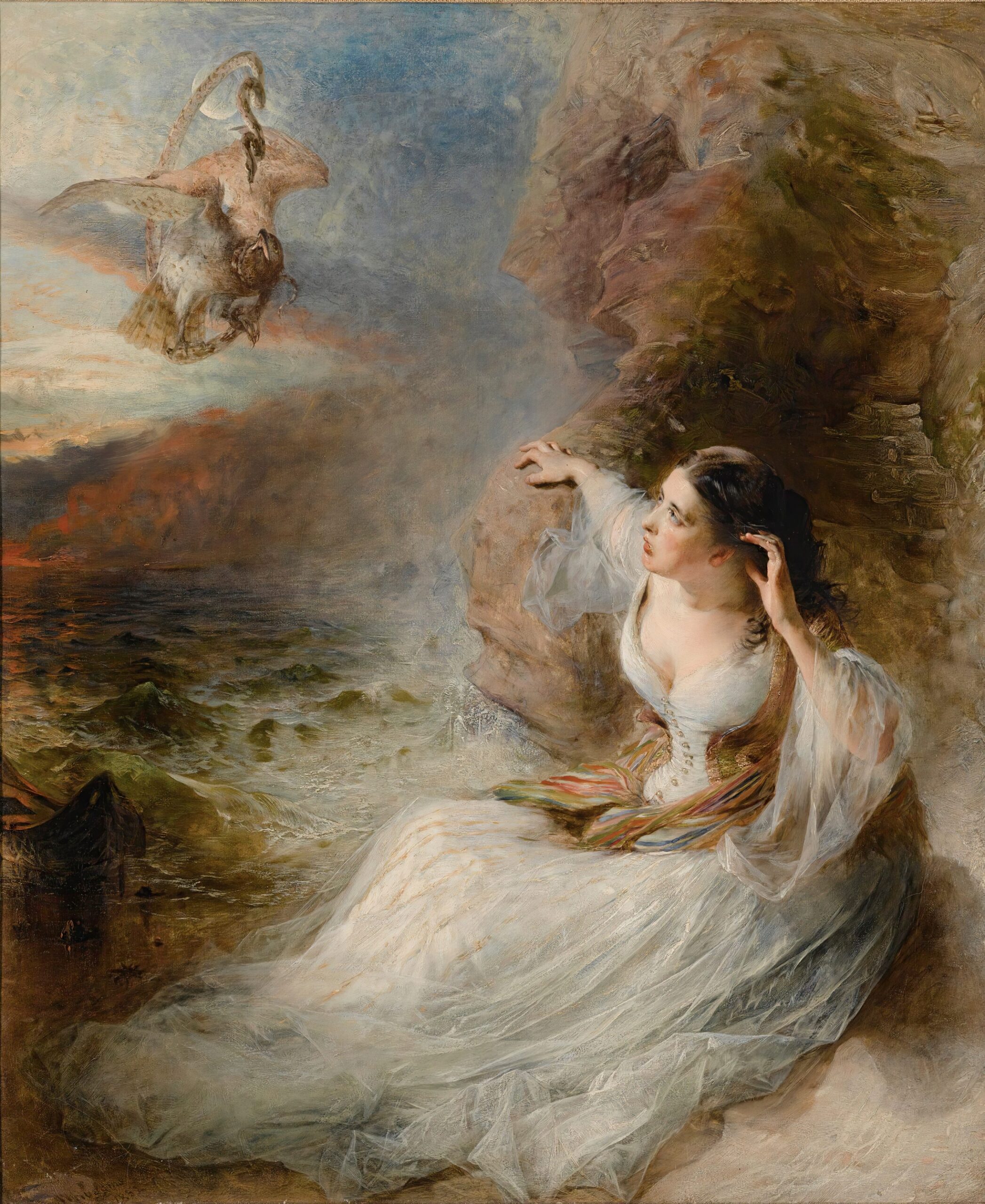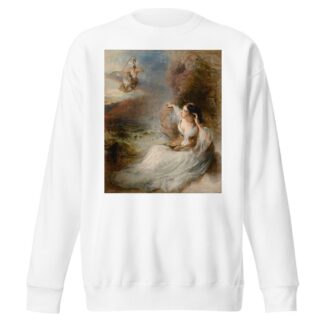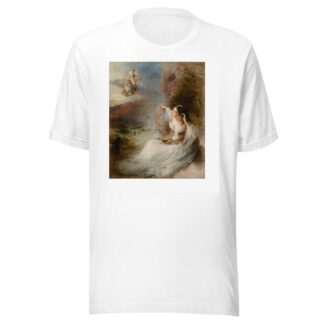Description
The Poet’s Vision, Canto I, Laon And Cythna by William Huggins printed on a T-Shirt
About the T-Shirt
Regular fit
Standard length, the fabric easily gives into movement
Casual wear
A classic, everyday option loved by our customers
Side-seamed
Constructed by sewing two parts together, creating a fitted look
The Unisex Staple T-Shirt feels soft and light with just the right amount of stretch. It’s comfortable and flattering for all. We can’t compliment this shirt enough–it’s one of our crowd favorites, and it’s sure to be your next favorite too!
- Solid colors are 100% Airlume combed and ring-spun cotton
- Ash color is 99% combed and ring-spun cotton, 1% polyester
- Heather colors are 52% combed and ring-spun cotton, 48% polyester
- Athletic and Black Heather are 90% combed and ring-spun cotton, 10% polyester
- Heather Prism colors are 99% combed and ring-spun cotton, 1% polyester
- Fabric weight: 4.2 oz./yd.² (142 g/m²)
- Pre-shrunk fabric
- 30 singles
- Side-seamed construction
- Tear-away label
- Shoulder-to-shoulder taping
- Blank product sourced from Nicaragua, Mexico, Honduras, or the US
William Huggins (1820 – 1884)
William Huggins was an English artist, from Liverpool, who specialised in drawing animals.
Huggins was a member of the Liverpool Academy of Arts. He enjoyed visiting Wombwell’s Travelling Menagerie, an animal circus, and the Liverpool Zoological Gardens. Huggins has been compared to fellow Liverpool artist George Stubbs and is known for keeping his house full of pets.
William Huggins was born in Liverpool. His parents were called Samuel and Elizabeth. He received his first instruction in drawing at the Liverpool Mechanics’ Institution. He won a prize for “Adam’s Vision of the Death of Abel” and successfully entered work to be shown at the Liverpool Academy of Arts whilst fifteen years old. He drew from life using the classes at the Academy of Arts or by sketching the animals in Liverpool’s zoo. He travelled further afield to see exotic animals at the unusual Wombwell’s Travelling Menagerie. His animal work was admired and compared to Stubbs. Huggins was magnanimous in acknowledging Stubbs’ influence and this contrasts with a later comparison that was made with Landseer where Huggins felt insulted. Huggins pictures of exotic animals were much admired but they are noted for lack of background as Huggins never saw them in their own habitat.
In 1845 Huggins changed his themes away from animals and chickens. His paintings were based on literary themes from Milton, Shelley and Spenser’s “The Faerie Queene” and Moore’s “Enchantress and Nourmahal”
Huggins first exhibited “Androcles and the lion” at the Royal Academy and made successful entries from 1846 until he was in his seventies. In addition he showed his paintings at most of the major cities in Great Britain. He was influenced in his use of glazes by the Pre-Raphaelites who also had exhibitions there. He became a full member of the Liverpool Academy in 1850 (resigning in 1856), but never became an RA (Royal Academician).
In 1861 Huggins moved to Chester where he lived with his brother, Samuel, until 1865. Huggins work at this time moved from animals to buildings (his brother, Samuel was a notable architectural writer). He painted Chester Cathedral which his brother was to go on to defend when it was to be restored. After leaving his brother, he painted the “Stones of Chester, or Ruins of St. John’s” (1874) and the “Salmon Trap on the Dee”. He moved to Betws-y-Coed in 1876 so that he could paint landscapes. One painting that resulted was, “The Fairy Glen” which was exhibited in Liverpool in 1877.
Huggins eventually moved from Wales and settled in and died in the Cheshire village of Christleton on 25 February 1884, just a year before his brother, Samuel. The brothers were buried in St James’ Church, Christleton, and the headstone of their grave is a Grade II listed building.






Reviews
There are no reviews yet.